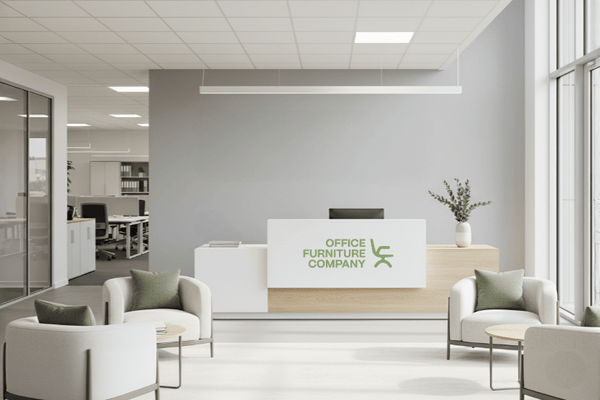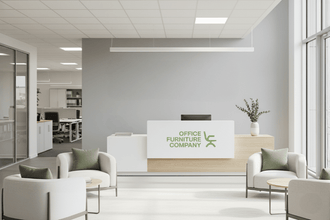
How to Plan Flexible Learning Spaces for Modern Learning
Introduction to Flexible Learning Spaces in Education
Schools, universities, and training providers are rethinking how their learning spaces are designed and used. Classrooms have never been static environments. Teachers have always rearranged desks, shifted layouts, or adapted rooms for particular lessons and projects. What has changed in recent years is the expectation that flexible learning spaces should adapt as part of everyday teaching. Instead of making occasional adjustments, educators now need environments that can support multiple modes of learning within the same day. This includes whole-class instruction, small-group collaboration, individual quiet study, or private spaces for supported learning.
Designing these environments is not just about moving items around. It is about creating versatile spaces that can be configured and utilised in different ways depending on the activity. A successful learning space design considers configurable desks and seating, effective acoustic control, reliable access to technology, and thoughtful layouts to contribute to a learning environment that feels supportive rather than restrictive.
As a commercial furniture provider, our expertise lies in the practical side of delivery rather than pedagogy. We help facilities teams, business managers, and leadership groups translate educational goals into spaces that are durable, inclusive, safe, and cost-effective. Drawing on experience from fitouts across schools, universities, and workplaces, we understand how to balance design ambition with compliance, budgets, and long-term usability for any flexible learning environment.
This article is written as a comprehensive guide to planning flexible learning spaces. It covers the planning process, key furniture and design considerations, and strategies for implementation and measurement. The aim is to give education leaders a clear, practical framework to use when working with staff and suppliers. This helps ensure that learning environments remain adaptable, inclusive, and ready to evolve as needs change.
Key Takeaways
Adaptability is Key: A flexible learning space is defined by its ability to support multiple teaching and learning modes, from whole-class instruction to individual study, within the same physical area, often on the same day.
Planning is Collaborative: Effective learning space design involves input from teachers, students, and facilities staff to ensure the environment is practical, engaging, and compliant.
Furniture is Functional: Success relies on multi-purpose, durable, and ergonomic furniture. Key elements include modular desks, mobile storage, and acoustic solutions like pods that serve multiple functions.
Technology and Acoustics Matter: Integrating accessible power and managing noise levels are critical for creating a focused and functional environment that supports both digital and collaborative learning.
Success is Measured Holistically: The effectiveness of a flexible learning environment is measured by student engagement, staff adaptability, space utilisation, and long-term sustainability.
What Are Flexible Learning Spaces?
Flexible learning spaces are environments designed to support a variety of teaching and learning approaches within the same physical area. Rather than locking a room into a single layout, these spaces allow educators to shift between modes of instruction. This may include whole-class teaching, collaborative group work, quiet study, or one-on-one support. The goal is not simply to move furniture around but to create spaces that can adapt to different activities and student needs throughout the day.
The defining feature of flexible learning spaces is that they respond to people, not the other way around. When students and staff enter the room, the space should be able to adjust to them. It should not force them into a rigid setup. This adaptability can reduce barriers to engagement, support different learning styles, and make it easier for educators to deliver lessons that vary in pace and structure.
While every institution has its own priorities, most flexible environments share a few common elements. These include modular furniture that can be reconfigured, accessible power and technology, zones for different activities, and acoustic solutions that help manage noise levels. Together, these elements create spaces that are more inclusive, practical, and responsive to the realities of modern education.
Planning Your Flexible Learning Environment
Defining teaching activities and goals
The first step in effective learning space design is to map out the range of learning activities the space needs to support. For some schools, that might mean a balance between group collaboration and independent study. For others, the priority may be providing space for digital learning, specialist support, or project-based activities. Defining these needs upfront gives a framework for decisions about layout, furniture, and budget.
Involving teachers, students, and facilities staff
Teachers bring insight into how lessons actually run, students can provide feedback on what helps them feel engaged, and facilities teams understand compliance, safety, and maintenance requirements. Leadership groups provide the broader vision for how learning spaces align with strategic goals. Bringing these perspectives together creates a design for a flexible learning environment that works in practice rather than just on paper.
Designing for inclusivity and accessibility
Spaces need to accommodate students with diverse learning styles and physical needs, ensuring layouts are not only adaptable but also equitable. Features such as clear circulation paths, adjustable furniture, and quiet zones can make a significant difference to how well a flexible learning classroom serves all learners. Accessibility standards should be factored into the earliest planning stages so that inclusivity is built into the design rather than added later.
Trialling and staging rollouts
For campuses with multiple learning areas, planning is often staged. Schools and universities may choose to trial flexible layouts in one or two classrooms, gather feedback, and then roll out changes more broadly. This approach helps refine the design, reduces disruption, and spreads costs over time. Piloting also provides valuable insight into which solutions are most effective in practice.

Furniture and Learning Space Design Considerations
Ergonomic furniture for comfort and posture
Chairs and desks should support good posture, particularly in settings where students spend long periods seated. Adjustable-height options and durable finishes contribute to comfort and usability. In many flexible learning classrooms, furniture also needs to withstand constant movement. It may be reconfigured several times a day without compromising strength or stability.
Storage solutions that maximise classroom space
Mobile units, stackable seating, and integrated shelving can reduce clutter and free up space for different activities. When storage is overlooked, collaborative learning spaces can quickly become crowded, making it harder for staff and students to use the space effectively. Well-designed storage supports smoother transitions between activities.
Integrating technology into layouts
Reliable access to power, data points, and device storage allows digital tools to be used without disruption. In some cases, this may mean fitting out collaborative tables with built-in charging. In others it could involve positioning pods or breakout furniture close to existing infrastructure. Technology integration works best when designed into the layout rather than added as an afterthought.
Managing acoustics with furniture and finishes
Open-plan or collaborative learning spaces can easily become noisy, and poor acoustics can affect concentration and teaching clarity. Acoustic wall panels, flooring materials, and furniture with sound-absorbing finishes can all contribute to a quieter environment. Even simple choice like chairs with felted legs or fabric-covered dividers can make a measurable difference.
Balancing durability with cost
Schools and universities need to balance quality with budget, ensuring that the investment holds up over years of use. While premium finishes may not be necessary everywhere, it often pays to prioritise durability for high-traffic furniture such as seating, desks, and collaborative tables. Selecting items that serve multiple functions is one way to maximise value.
Acoustics in a Flexible Learning Environment
Acoustic materials and finishes
Good acoustic design starts with materials and finishes. Floor coverings, wall panels, ceiling baffles, and even the surfaces of furniture can all help reduce noise levels. The goal is not silence but balance. Background noise should sit at a level where group discussions and individual focus can comfortably happen side by side.
Zoning for quieter learning
Creating distinct areas within a classroom or campus helps guide how sound travels and reduces disruption. Furniture layout, screens, and partitions all play a role in separating activities without the need for permanent walls. Effective zoning makes it possible for multiple activities to take place simultaneously.
Acoustic pods in education and funding pathways
Within this broader strategy, acoustic pods offer an additional layer of flexibility and are becoming a popular choice. They combine several functions in a single item. Pods help manage acoustics, create zones, provide private focus spaces, and support small group collaboration. Because pods are self-contained and relocatable, they solve multiple design challenges without committing to permanent construction. They may also unlock funding pathways that are harder to access for capital works. In many cases pods are treated as furniture or minor works, which means they may be eligible under equipment or minor capital grants with simpler approvals and shorter lead times. Always check local grant criteria and compliance requirements for your state or sector.
Implementing Flexible Learning Spaces in Education
Timing rollouts around school schedules
Practical execution starts with timing. Schools may coordinate installation during term breaks to minimise disruption, while universities and training providers often work around semester schedules. Delivery, installation, and IT integration need to be carefully sequenced so spaces are ready for use as soon as teaching resumes.
Supporting staff and students through change
Teachers need support in understanding how to use new layouts, furniture, or technology to their full potential. Short training sessions, demonstration lessons, and peer sharing can all help build confidence and avoid frustration. Students also benefit from clear communication about how new flexible learning spaces are intended to work. This reduces uncertainty and helps them settle quickly into revised routines.
Treating implementation as an ongoing process
Implementation should be viewed as an ongoing process rather than a one-time upgrade. A flexible learning environment evolves, and feedback loops are essential. Observing how spaces are used in practice, gathering feedback from staff and students, and making adjustments over time ensures the investment continues to deliver value long after the initial installation.

Measuring the Success of Your Flexible Learning Environment
Indicators of student engagement
One clear measure is how students respond to the space. Are they more willing to participate in group work? Do they use quiet zones effectively? Feedback from staff often highlights improvements in focus, collaboration, and classroom behaviour. While learning outcomes depend on many factors, an environment that reduces distractions and offers choice can make engagement easier to achieve.
Staff feedback and teaching adaptability
Teachers and trainers are in the best position to judge whether a space helps or hinders their work. Success is evident when staff report that they can shift between teaching styles with minimal disruption and that they feel supported by the layout of their flexible learning classroom rather than restricted by it. Collecting this feedback regularly provides valuable insight into where further adjustments may be needed.
Utilisation and operational efficiency
Facilities teams often track how different areas are being used. High utilisation of group zones, pods, and quiet areas suggests the learning space design is meeting a range of needs. Conversely, spaces that sit empty may indicate that layouts need refining or that staff and students require more guidance on how to use them effectively.
Long-term adaptability and sustainability
True success is measured over time. A flexible learning space should remain relevant even as class sizes, teaching styles, and technology change. Durability of furniture, ease of reconfiguration, and the ability to repurpose areas all contribute to sustainability. When spaces continue to perform well years after installation, the investment proves its worth.
By combining the indicators of student engagement, staff feedback, utilisation data, and long-term adaptability, schools, universities, and training providers can make confident decisions about how well their flexible learning environments are working and where future improvements should be directed.
Future Trends in Flexible Learning Spaces
The evolution of flexible learning environments will continue as education responds to technological, social, and environmental shifts. Several trends are already shaping how institutions plan their spaces:
Integration of hybrid learning: Classrooms increasingly need to support both in-person and remote participants. This requires reliable technology, camera positioning, and layouts that allow all students to engage.
Sustainable design priorities: Institutions are focusing on environmentally responsible materials, furniture with long lifespans, and energy-efficient layouts. Sustainable procurement is not only a compliance expectation but also part of broader education values.
Smart and connected furniture: Internet-enabled desks, pods with integrated ventilation, and real-time utilisation tracking are becoming more common. These tools help facilities teams monitor use and adjust layouts more effectively.
Wellbeing-focused environments: Beyond academics, schools and universities are paying closer attention to how space impacts wellbeing. Access to natural light, comfortable seating, and quieter zones all play a role in supporting mental health and student resilience.
These developments reinforce the importance of designing spaces that are adaptable not just for today’s needs but for the demands of the next decade.

Frequently Asked Questions about Flexible Learning Spaces
1. What makes a flexible learning space effective?
An effective flexible classroom is one that helps teachers move easily between teaching modes. Layouts should be quick to change, technology reliable, and students confident about how to use the space. Success is less about appearance and more about whether the environment genuinely supports teaching goals.
2. How much space is needed for collaborative learning?
There is no set formula, but collaborative activities usually take more room than traditional rows of desks. Clear walkways, clutter-free storage, and reconfigurable furniture help staff make the most of whatever footprint is available.
3. Are acoustic solutions and pods worth considering?
Yes, provided they are integrated thoughtfully. Acoustic treatments reduce distractions, while pods add private or small-group zones without permanent construction. The key is making sure they align with safety, accessibility, and teaching needs.
4. Can existing classrooms be made more flexible without major works?
In most cases, yes. Replacing fixed desks with modular furniture, improving acoustics, and creating simple zones can transform usability. Incremental changes staged over time often deliver strong results without requiring full refurbishment.
Conclusion: The Future of Flexible Learning Spaces in Education
Flexible learning spaces are now central to how schools, universities, and training providers plan for the future. The shift reflects a growing recognition that teaching and learning improve when environments can adapt. This may include whole-class instruction, collaborative projects, or quiet supported study.
Designing these environments well requires careful balance. Each element, from layout and technology to durability and acoustics, needs to be considered in context rather than in isolation. Just as importantly, the learning space design process should involve staff and students, whose insights ensure that spaces work in practice as well as on paper.
A core principle is choosing items that do more than one job. Desks that are height adjustable or easy to reconfigure allow flexible learning classrooms to shift smoothly between different activities and users. Storage units that double as dividers free up valuable floor space while keeping equipment organised and accessible. Acoustic solutions that also serve as partitions not only reduce noise but also create clear zones within the same footprint. The most effective flexible environments are built on single items with multiple purposes.
Acoustic pods are one of the strongest examples of this principle. In a single unit, they manage sound, create zones, provide private focus areas, and support small group collaboration. Because pods are self-contained and relocatable, they also offer advantages over permanent construction and often fall within grant or minor works funding categories. This gives education providers a practical way to expand learning options while larger infrastructure projects are planned or delivered.
Implementation is just as critical as design. Projects succeed when they are phased carefully, supported by clear communication, and reviewed regularly. A flexible learning environment should evolve as teaching practices, enrolments, and technology change, making adaptability a long-term asset rather than a short-term upgrade.
For education leaders, the lesson is clear. Flexible learning spaces are not about adding more furniture. They are about selecting smarter, multi-purpose solutions. With thoughtful planning, the right mix of adaptable items, and awareness of funding opportunities, schools and universities can create collaborative spaces in education that are practical today and resilient for the future.
Office Furniture Company supports education providers to design and deliver adaptable learning environments with practical, durable, and cost-effective furniture solutions; call 1300 99 77 47 or contact us online to bring your project to life.

About the Author
Priya Bennett is the Subject Matter Expert guiding Office Furniture Company's strategic approach to commercial fitouts. Her insights are drawn from her deep experience across diverse sectors, including government, education, and healthcare.
Recognized as the company's trusted internal voice on products, workplace design and ergonomics, Priya also serves as lead content author. She translates complex industry knowledge into practical articles and guides, establishing a key resource that empowers businesses to create more productive and healthy work environments.


















